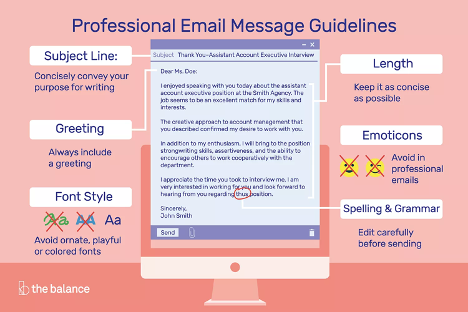Crafting The Perfect Blog Structure: A Guide To Effective Writing

Executive Summary

This comprehensive guide dives deep into the art of crafting a compelling blog structure. We’ll move beyond simply stringing words together and explore the strategic elements that transform a collection of sentences into a high-performing, engaging, and ultimately, successful blog post. From understanding your audience and defining your purpose to mastering the nuances of subheadings, visuals, and calls to action, this guide equips you with the tools to create content that not only ranks well but also resonates deeply with your readers. We’ll uncover the secrets to creating a structure that captivates, informs, and converts, ultimately helping you achieve your blogging goals.

Introduction
In the crowded digital landscape, your blog post needs to stand out. It’s not enough to simply write; you need to strategically craft your content to maximize its impact. This guide provides a framework for building a blog structure that is not only reader-friendly and easy to navigate but also optimized for search engines. We’ll examine the key components of successful blog posts and provide practical tips to elevate your writing game and increase your blog’s visibility. Get ready to transform your blog posts from ordinary to extraordinary!
FAQ
-
Q: Why is blog structure so important? A: A well-structured blog post improves readability, enhances user experience, and significantly impacts search engine optimization (SEO). A clear structure guides the reader smoothly through your content, leading to higher engagement and retention.
-
Q: How can I ensure my blog post is engaging? A: Engagement is key! Use compelling headlines, break up text with visuals and subheadings, incorporate storytelling techniques, and address your reader directly. Remember to keep your tone conversational and relatable.
-
Q: What’s the best way to optimize my blog post for SEO? A: SEO is a crucial element. Use relevant keywords naturally throughout your content, optimize your images with alt text, and build high-quality, backlinks from other reputable websites. A clear structure helps search engines understand and index your content effectively.
Keyword Research and Audience Analysis
Effective blogging begins with understanding your audience and identifying relevant keywords. Don’t just write; write for someone. This involves meticulous research into what your target audience wants and needs, as well as discovering the keywords they’re using to find information online.
-
Thorough Keyword Research: Utilize tools like Google Keyword Planner, Ahrefs, or SEMrush to identify high-volume, low-competition keywords relevant to your niche. Focus on long-tail keywords (more specific phrases) to target a more engaged audience.
-
Competitive Analysis: Examine successful blog posts in your niche to identify gaps and opportunities. What are they doing well? What can you improve upon? Analyze their keywords, structure, and overall approach.
-
Audience Persona Development: Create detailed personas representing your ideal reader. Consider their demographics, interests, pain points, and online behavior. This helps tailor your content to resonate deeply with your target audience.
-
Content Calendar Planning: Planning ahead is essential. Create a content calendar outlining your topics, keywords, and publishing schedule. This ensures consistent content creation and streamlines your workflow.
-
Topic Clustering: Group related topics together to create a cohesive and informative experience for your readers. This improves SEO and provides a better user experience.
-
Search Intent Understanding: Understand why people are searching for specific keywords. Are they looking for information, to buy a product, or something else? Tailor your content to meet their search intent.
Compelling Headlines and Introductions
The headline is your first impression – make it count! A captivating headline grabs attention and entices readers to click. Similarly, a strong introduction sets the tone and establishes the value proposition of your post. This is where you hook your reader and convince them to keep reading.
-
Headline Optimization: Craft headlines that are concise, clear, and benefit-driven. Use strong verbs and numbers to create intrigue. A/B test different headlines to see which performs best.
-
Introduction Hook: Start with a captivating sentence or question that immediately grabs the reader’s attention. This could be an anecdote, a statistic, or a provocative question.
-
Value Proposition Statement: Clearly state the value your blog post provides to the reader. What will they learn? How will it benefit them?
-
Reader Engagement: Address the reader directly using “you” and “your” to create a more personal and engaging connection.
-
Transition to Body: Seamlessly transition from the introduction to the main body of your blog post. This ensures a natural flow and prevents jarring shifts in focus.
-
SEO Keyword Integration: Naturally incorporate your target keywords within your headline and introduction to improve SEO.
Strategic Use of Subheadings, Visuals, and Formatting
Breaking up large blocks of text with subheadings, visuals, and formatting elements enhances readability and engagement. These elements also help to improve SEO by providing structure and context to your content.
-
Clear and Concise Subheadings: Use subheadings to break your content into logical sections. Make them descriptive and keyword-rich.
-
Visual Appeal: Incorporate images, videos, infographics, and other visuals to make your blog post more engaging. Use high-quality visuals and optimize them for web performance.
-
White Space Utilization: Don’t cram your content together. Use white space (empty space) effectively to improve readability.
-
Bullet Points and Lists: Use bullet points and numbered lists to break up text and highlight key information.
-
Bold and Italics: Use bold and italic text strategically to emphasize important points and improve readability.
-
Call to action placement: strategic placement of CTAs throughout the post.
Internal and External Linking
Linking strategically within your blog and to external resources enhances the user experience and improves SEO. Internal links help users navigate your site, while external links provide additional context and build authority.
-
Internal Linking: Link to other relevant blog posts on your website to guide readers and enhance navigation.
-
External Linking: Link to authoritative sources to support your claims and provide readers with additional information. Only link to high-quality, trustworthy sources.
-
Link relevance: Only link to pages that are directly relevant to the content. Avoid irrelevant or broken links.
-
Anchor text optimization: Use descriptive anchor text when linking to improve SEO and user experience. Avoid generic anchor text like “click here.”
-
Contextual linking: Integrate your links naturally into the flow of your content. Avoid unnatural or forced links.
-
Link juice distribution: Distribute link juice effectively across your website by linking strategically to relevant pages.
Conclusion
Crafting the perfect blog structure isn’t about following rigid rules; it’s about understanding your audience, defining your purpose, and strategically employing various techniques to create a compelling and engaging reading experience. By mastering the art of keyword research, crafting captivating headlines and introductions, utilizing subheadings and visuals effectively, and implementing internal and external linking strategies, you can transform your blog posts into high-performing content that drives results. Remember that continuous improvement and adaptation are key to long-term success in the ever-evolving world of blogging. Implement these techniques, analyze your results, and adapt your approach to continuously enhance your blog’s performance and reader engagement. Start writing better blogs today!
Keyword Tags
Blog structure, SEO writing, content marketing, audience engagement, effective blogging
(adsbygoogle = window.adsbygoogle || []).push({});

